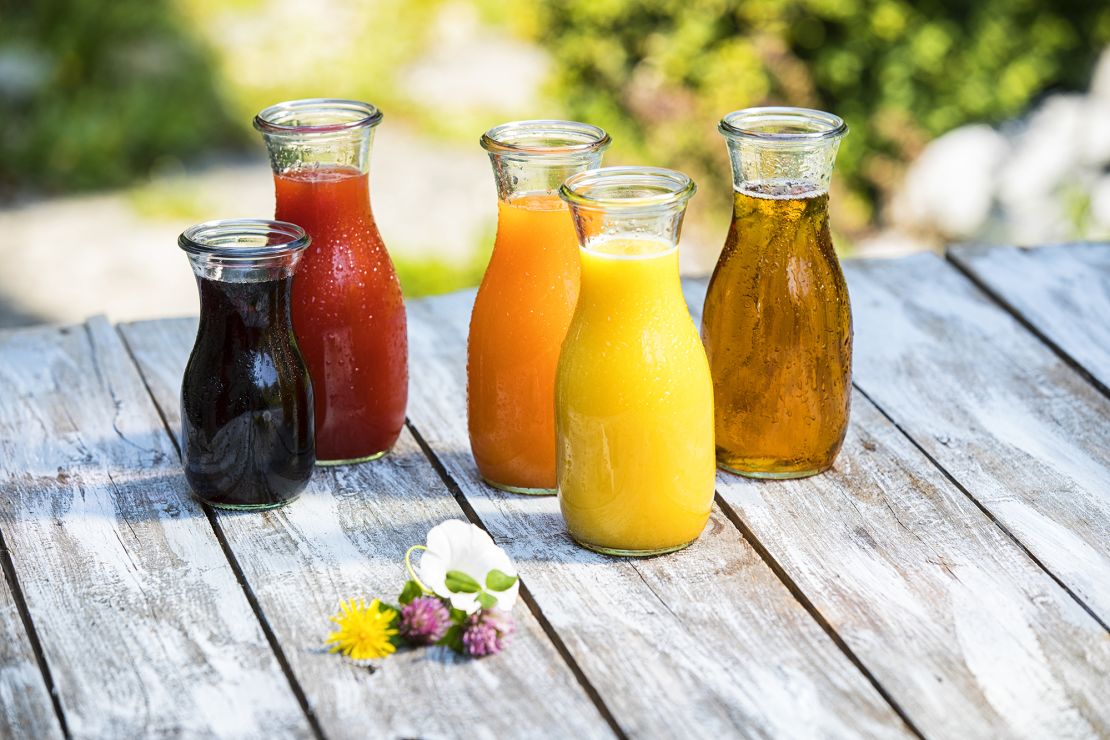Drinking a glass or more of 100% fruit juice each day was linked to a small increase in weight in children and adults, according to a new analysis of prior studies.
“One fundamental problem with juice is quantity; consuming fruit this way makes it so easy to overdose,” said coauthor and leading nutrition researcher Dr. Walter Willett, a professor of epidemiology and nutrition at Harvard T.H. Chan School of Public Health and professor of medicine at Harvard Medical School in Boston.
“For example, how often do we eat three oranges? Yet, a glass of OJ is about three oranges that can be consumed in a minute or two, and we can go back and have another, and that will add many calories and lead to a spike in blood glucose,” Willett said in an email.
While the study’s conclusions drawn did not show a direct causation, only an association, the findings were “quite valid and match what we see clinically,” said pediatric endocrinologist Dr. Tamara Hannon, a member of the American Academy of Pediatrics’ committee on nutrition, who was not involved with the research.
Due to concerns over the rising rate of childhood obesity and dental cavities, the AAP advises parents and guardians to avoid juice entirely for babies younger than 1 year old, limit intake to 4 ounces a day for children ages 1 to 3 years old and only 6 ounces a day for children ages 4 to 6 years old.

Teens and adults should drink no more than 8 ounces a day of 100% juice, according to national nutritional guidelines, and juice should not be seen as a healthy way to quench thirst.
“General guidance is against ‘routine’ intake — in other words, relying on juice rather than water for thirst, or consuming juice specifically for health benefits,” said Dr. David Katz, a specialist in preventive and lifestyle medicine who founded the nonprofit True Health Initiative, a global coalition of experts dedicated to evidence-based lifestyle medicine. He was not involved in the study.
“It’s not for daily health — it’s an occasional sweet treat. In such a context, fruit juice is a much better choice than soda, for many reasons,” said Katz in an email.
How juice impacts the body
For some, the concern over 100% fruit juice may be baffling — fruit is healthy, right? So, what’s the difference between the fruit and its juice?
“Whole fruits and vegetables come in packages of nutrients — carbohydrates, protein, fat, minerals and vitamins that are all contained with fiber. That’s how our bodies are meant to get nutrition,” Hannon said. “When we take away the package, we take away the fiber and the structural parts of the food, and our body digests and metabolizes it differently than it evolved to do so.”
Eating a whole apple, for example, doesn’t spike blood sugar levels because fructose, the sugar found naturally in fruits and some vegetables, is released slowly into the blood. Drinking apple juice, however, floods the blood with fructose.
“The blood cannot be sugary. It’s dangerous for organs, so the body has lots of mechanisms to get rid of sugar quickly and keep our blood sugar normal,” Hannon explained. “So, the liver, which metabolizes sugars, converts a large part of those calories into a fat that can be stored easily and kept out of the blood.”
That’s not the only impact, said corresponding study author Vasanti Malik, a research scientist in the department of nutrition at the Harvard T.H. Chan School of Public Health.
“When you consume calories in solid form, your brain is better at registering those calories and adjusting your food intake accordingly,” Malik said. “But if you drink those calories, you may not feel full and begin to eat again.”
Portion sizes matter
The meta-analysis, published Tuesday in the journal JAMA Pediatrics, analyzed 42 studies: 17 in children and 25 among adults.
“The good thing about a meta-analysis is that it takes small studies and puts all the data together so it can be analyzed as if it were one big study,” Hannon said.
In children, each additional serving per day of 100% fruit juice was associated with a 0.03 higher body mass index, or BMI, change, according to the study.
Initially, the study did not find an impact on adults due to variations in how calories were measured, Malik said. However, when only a subset of 25 studies that did adjust for calories were reviewed, the results showed a small 0.02 change in BMI.
To calculate adult BMI, weight is divided by the square of a person’s height. A child’s healthy weight range is based on a BMI between the 5th and 85th percentile on the CDC growth charts. As the calculation is more complicated, parents and caregivers should never use an adult BMI calculator to determine their child’s weight status, the CDC said.
While the changes in BMI found by the study may be tiny per person, “when you look at a small amount over the entire population of the world that’s hugely impactful, especially since most people are not drinking 4 ounces of juice a day, which is a standard serving,” Hannon said.
“They’re drinking 16, 20, 24 ounces of juice a day, which is then associated with significant increases in BMI,” she said. “My advice to parents is always discuss with your doctor, but don’t consider juice to be a healthy drink for when you’re thirsty.
“For snacks and treats offer your child whole fruit if your child can eat it,” Hannon added. “And if you’re using juice as a fruit serving, it should be a half of a cup, no more a day.”
CNN Health










